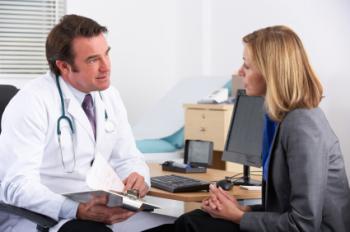Using a computer model, researchers have identified a simple way to optimize
dosing that could bring back a whole arsenal of first-line antibiotics and preserve
last-resort antibiotics in the fight against drug-resistant bacteria.

When doctors realize an infection is resistant, they often go straight to a last-resort antibiotic.
Writing in the journal PLOS Computational Biology, researchers at Duke
University in Durham, NC, describe how a computer simulation developed in their lab shows
that a dosing regimen based on the recovery time of a target bacteria could eliminate an
otherwise resistant strain.
In his Nobel Prize acceptance speech in 1945, Sir Alexander Fleming – the doctor and
bacteriologist who revolutionized medicine with his discovery of penicillin – warned that
there will come a time when penicillin will be so easy to acquire that “the ignorant man
may easily underdose himself and by exposing his microbes to non-lethal quantities of the
drug, make them resistant.”
Seventy years later, the era Fleming predicted is upon us. The World Health Organization (WHO)
describe antibiotic resistance as a major threat to global public health; bacteria are
becoming resistant faster than we can develop new drugs to fight them.
This means there is a pressing need to use the antibiotics we already have
more effectively.
First author Hannah Meredith, creator of the computer model and biomedical engineering
graduate fellow at Duke, says:
“We hope this research will help hospitals improve patient outcomes while also making
our antibiotics last as long as possible.”
Computer model focuses on period before beta-lactamase degrades the antibiotic
The computer model simulates the relationship between bacteria and antibiotics while
focusing on the activity of a bacterial enzyme called beta-lactamase. The enzyme attacks
beta-lactam antibiotics – one of the largest and most-used class of antibiotics.
Many beta-lactam antibiotics are overlooked because doctors believe the infection they
are treating is completely resistant to them, even if they are shown to be effective in
lab tests.
However, the computer model shows there is a period – before the beta-lactamase degrades the drug – when the bacterium is sensitive to the
antibiotic.
Senior author Lingchong You, an associate professor of biomedical engineering who
heads the lab Meredith works in, explains:
“You can think of this as a race between the cells and the antibiotics. Before their
beta-lactamase degrades the antibiotics, the cells are still sensitive and can be killed.
But the antibiotics degrade faster than the cell population declines, allowing some cells
to survive and repopulate.”
Database of recovery times could bring back first-line antibiotics
When doctors realize an infection is resistant, they often go straight to a last-resort antibiotic. But the study suggests if they were to stick to the first-line
antibiotic and change the dosing frequency so each dose hits the bacteria during their
recovery period while they are weak, some infections could be cleared without reaching
for the last resort.
The team says, in theory, a database of recovery times for different combinations of
bacteria and antibiotics could allow first-line antibiotics to clear many resistant
infections.
There are other important considerations when administering antibiotics. For example,
doctors need to take care not to wipe out native populations of bacteria that are
important for health.
A database of the responses of different strains to different antibiotics could allow
the simulation to find the optimum dosing regimen that keeps total exposure to a minimum.
It could also show whether multiple doses are likely to work and let doctors know when it
is time to reach for the stronger drug.
Prof. You explains that others are already working on how to determine antibiotic
dosing schedules, but they are typically using models based on complex biological
mechanisms. Such approaches are time-consuming, he adds, and there are thousands of new
strains evolving all the time – it is impossible to keep up.
“We’re trying to see if this one, easy-to-test metric of recovery time can make a good
enough prediction without years of study,” says Prof. You.
Work on developing the database has already started and early results are promising,
says Meredith:
“Our preliminary data have confirmed many of the clinical aspects of the
model’s predictions, so we are tremendously excited by those. If this strategy is
successful, it could potentially reintroduce a large number of first-line antibiotics for
patient treatment.”
The National Science Foundation, the National Institutes of Health and a number of
Fellowship awards helped fund the study.
Meanwhile, Medical News Today recently learned of another intriguing study
that showed maple syrup helps antibiotics defeat
bacteria.
Writing in the journal Applied and Environmental Microbiology, researchers
from McGill University in Canada describe how they found concentrated maple syrup extract
makes disease-causing bacteria more susceptible to antibiotics.